This blog contains the best treatment to stop Restless Legs Syndrome (RLS). It is likely that you searched for ways to relieve yourself if you’ve been kept awake by restless legs syndrome at night, which is the main symptom.
The need for relief extends to not just discomfort, but also disruption of sleep, which can lead to further complications. However, home remedies can help ease those symptoms to some extent, although complete relief may not be possible.
What is restless legs syndrome?
It is also known as Willis-Ekbom disease. RLS causes leg pain, numbness and tingling. Feelings of crawling, tingling, and creeping have been described as the predominant sensation.
When someone has RLS symptoms, they usually occur while sitting, sleeping, or resting. PLMS refers to periodic limb movements during sleep caused by RLS. Sleep problems can be caused by these movements.
People with primary RLS have no idea what causes it. There are also people who suffer from secondary RLS, which occurs when they have nerve problems, are pregnant, have low iron levels, or suffer from chronic kidney failure.
Restless leg syndrome symptoms are usually mild for most people. Nevertheless, RLS can adversely affect your life if you experience moderate to severe symptoms. You may not sleep enough, affecting your ability to concentrate and think during the day, as well as your job and social interactions.
RLS can result in anxiety and depression as a consequence of these problems. It gets worse as time goes on. Even your arms can be affected.
Treatment is crucial for people with RLS due to the effects it can have on their lives. RLS is treated through a variety of methods, as the underlying cause is unknown. Various researchers have suggested that RLS is caused by problems with the brain chemical dopamine, while others have suggested poor circulation causes it.
Find out what the best RLS treatments are here. You can even try some of them yourself. There may be other factors that your doctor can discuss with you in order to stop RLS.
Read: Sleep Paralysis
11 Tips to stop RLS
1. Eliminating potential causes
Identifying what is causing RLS should be your first step toward resolving the problem. RLS can be attributed to factors beyond your control, such as your genetics or pregnancy, but you can also address other potential factors.
A trigger could be your daily routines, medications you take, health conditions you have or other factors.
Habits
Drinking alcohol, smoking, and using caffeine will exacerbate RLS symptoms. You may be able to stop RLS by restricting these substances.
Medications
RLS symptoms can be exacerbated by some medications. Some examples are:
- Diaphenhydramine (Benadryl) is an older antihistamine
- An antinausea medication such as metoclopramide (Reglan) or prochlorperazine (Compro)
- Antipsychotic drugs such as haloperidol (Haldol) or olanzapine (Zyprexa)
- Lithium (Lithobid)
- There are many SSRIs available, such as fluoxetine (Prozac), sertraline (Zoloft) or escitalopram (Lexapro)
- Tricyclic antidepressants such as amitriptyline (Elavil) or amoxapine (Asendin)
- Tramadol (Ultram)
- Levothyroxine (Levoxyl)
Don’t forget to tell your doctor about any prescription or over-the-counter drugs you are taking. Consider talking to your doctor about whether any of these medications may be exacerbating your RLS.
Read: Nightmare Disorder
Health conditions
There are some health conditions associated with RLS. RLS has been linked with renal failure or ESRD, and nerve damage caused by diabetes. There is a strong correlation between RLS and iron deficiency anemia.
Especially if you suffer from any of these conditions, you should discuss the impact of your health history on RLS with your doctor.
Other triggers
Sugar consumption and tight clothing are two things some people claim aggravate the symptoms of RLS. Even though there aren’t a lot of studies supporting this connection, you might want to try it and see for yourself what works for you.
Identifying what causes RLS is the first step in treating it. You should consider your RLS symptoms as influenced by certain habits like smoking or drinking alcohol, medications and health conditions.
2. Healthy sleep habits
Anyone who struggles to sleep, such as someone with RLS, would benefit from good sleep habits.
It is possible that a better night’s sleep may not resolve your RLS symptoms; however, it is possible that it could help you offset the sleep loss you experience due to it. Here are some tips to help you get a good night’s sleep.
- Set an alarm every day for the same time.
- Make your sleeping area cool, dark and quiet.
- Try to minimize distractions in your bedroom, such as the TV and the phone.
- Try to avoid using electronic devices before you sleep for at least two to three hours. Circadian rhythms are affected by the blue light from these screens.
While your symptoms of RLS may not be alleviated by healthy sleep habits, they may help in lessening some of its effects.
Read: Circadian Rhythm Sleep Disorder
3. Vitamin and iron supplements
RLS is believed to be caused by iron deficiency. Research has shown that iron supplements can stop RLS.
It is possible to check for iron deficiency with a simple blood test, so if you suspect that this might be a problem for you, consult your doctor.
You can find oral iron supplements at your local pharmacy if you test positive for iron deficiency. Intravenous (IV) iron may be necessary in some cases.
RLS is also associated with vitamin D deficiency. Vitamin D supplements were found to stop RLS symptoms in people who had RLS and vitamin D deficiency in a 2014 study.
RLS symptoms may also be relieved by hemodialysis patients taking vitamins C and E supplements.
RLS patients may benefit from taking iron or vitamins D, C, and E. Consult your doctor if you want to try supplements.
4. Exercise
Exercise may help you stop RLS symptoms.
Mild RLS symptoms may be eased by moderate exercise, according to the National Institutes of Health.
Those with RLS whose symptoms were reduced by aerobic exercise and lower body resistance training, three times a week for 12 weeks, participated in a study conducted in 2006.
RLS has also been linked to exercise, especially in people with end stage renal disease (ESRD).
The fact that exercise can improve sleep, in addition to these studies, makes it an obvious choice for people with RLS.
Restless Legs Foundation recommends exercising moderately. If you work out until you are aching and sore, you may exacerbate your RLS symptoms.
People with RLS will benefit from regular exercise since it reduces symptoms and improves sleep.
Read: Dyssomnia
5. Yoga and stretching
The benefits of yoga and stretching exercises for those with RLS are similar to those of other types of exercise.
Researchers discovered that yoga helped to stop RLS symptoms in an eight-week study in 2013. Additionally, it improved their moods and reduced their stress levels, which could help them sleep better. Yoga was also found to improve sleep in a study of 20 women with RLS that was conducted in 2012.
The RLS symptoms of patients on hemodialysis significantly improved with stretching exercises, according to a second study.
Researchers do not fully understand why yoga and stretching are effective, so more research is needed. However, you might want to consider adding upper leg and calf stretches to your daily exercise routine given these results.
RLS symptoms might be relieved by yoga and stretching exercises, even though it’s not fully understood why.
6. Massage
Your RLS symptoms could be relieved by massaging your leg muscles. Many organizations recommend it as a treatment at home, including the National Institutes of Health.
In 2007, a case study illustrated the benefits of massage as a treatment for RLS, despite the lack of additional research to support the claim.
During the three weeks following a 45-minute leg massage twice a week, the symptoms of RLS were reduced in a 35-year-old woman. The techniques she used for her massages included Swedish massage and direct pressure on leg muscles.
Following two massage treatments, her RLS symptoms decreased, and the symptoms did not return until two weeks after the massage regimen ended.
This study suggested that massage could be beneficial due to the increased release of dopamine. There is also evidence that massage improves circulation, so that might be why it is beneficial for RLS.
A massage could also improve your sleep by aiding in relaxation. It can be relaxing and easy to stop RLS symptoms with leg massage regardless of the reason.
Read: Sleep Terrors
7. Prescription medications
Medications are a key component of RLS treatment. The first medication prescribed is usually dopaminergic. Though they stop RLS symptoms, they can have side effects.
RLS symptoms can also be relieved by other types of drugs, without causing the same problems.
Dopaminergic drugs
Drugs that increase dopamine production in the brain are called dopaminergic drugs. Dopamine aids in maintaining normal bodily function.
RLS is associated with low levels of dopamine in the body, so dopaminergic drugs may help relieve symptoms.
The FDA has approved three dopaminergic medications to treat moderate to severe primary RLS:
- Pramipexole (Mirapex)
- Ropinirole (Requip)
- Rotigotine (Neupro)
Long-term use of dopaminergic drugs may worsen RLS symptoms, even though they have been shown to improve symptoms. This is known as augmentation. The lowest possible dosage of these drugs is typically prescribed to delay this problem.
Additionally, these drugs may lose their effectiveness over time. RLS can be managed by combining dopaminergic drugs with other types of medications to help delay or prevent both these problems.
Read: How Pandemic COVID-19 Affects Our Dreams
Gabapentin
The FDA-approved drug for treating RLS is gabapentin (Horizant). It helps prevent seizures.
Research shows gabapentin is effective at relieving RLS symptoms, though its exact mechanism of action is not entirely understood.
Six weeks of treatment with gabapentin or placebo were examined in one study of 24 people with RLS. The gabapentin group improved their sleep patterns and reduced RLS-related leg movements. The placebo group did not.
There have been studies that compare gabapentin with ropinirole (one of the FDA-approved drugs to treat RLS). Both groups experienced a similar degree of relief from RLS symptoms after taking the drugs for four weeks.
Benzodiazepines
Anxiety and sleep disorders are treated with benzodiazepines. Often, patients with RLS have been prescribed clonazepam (Klonopin) along with other types of medications.
It may not be they themselves that relieve RLS symptoms, but the fact that they improve sleep can be highly beneficial for those with RLS.
Opioids
Pain is typically treated with opioids. Opioids can be used to treat RLS in some cases, especially when other medications aren’t effective or cause augmentation.
Targinact, a combination of oxycodone and naloxone, may help stop RLS symptoms and improve sleep. In spite of this, opioids will continue to be used as a last resort since newer guidelines are being developed.
Since opioids have the potential to be misused and abused, their use should be closely monitored by a doctor.
The medications your doctor will likely recommend will depend on the severity of your RLS. RLS is typically treated with dopaminergic drugs, but they can have side effects and augmentation, so their use needs to be carefully controlled.
Read: Central Sleep Apnea
8. Foot wrap (restiffic)
Studies have shown that a foot wrap can stop RLS symptoms.
This foot wrap is referred to as restiffic, and it places pressure on certain areas of the soles of your feet. When your brain receives messages from pressure, it tells the affected muscles to relax. The result is relief from RLS symptoms.
The foot wrap was found to significantly reduce symptoms of restless leg syndrome and improve sleep quality in a 2013 study of 30 people.
This foot wrap can only be obtained with a prescription and costs approximately $200, according to the company’s website. Your insurance may or may not cover the cost.
The restiffic foot wrap can reduce RLS symptoms by applying pressure to certain points on the bottom of the foot. It requires a prescription and an initial investment.
9. Pneumatic compression
A pneumatic compression may have occurred while you stayed overnight in the hospital. Treatment involves wearing an inflatable “sleeve” that squeezes and releases your limb gently as it is inflated and deflated.
Typically, pneumatic compression devices in hospitals are used to prevent blood clotting and improve circulation. The fact that pneumatic compression can alleviate RLS symptoms could also be the result of improved circulation.
Low oxygen levels in the limbs are believed to be one cause of RLS. When a person moves their limb, the muscle contractions that occur increase circulation in response to this problem.
Whatever the reason, pneumatic compression has been found to relieve symptoms associated with RLS.
Study results of 35 participants who used a PCD every day for at least an hour for a month showed that RLS symptoms, sleep quality, and functioning during the daytime improved significantly. Others have not observed similar improvements.
PCDs can be rented, and other PCDs can be purchased with a prescription or over the counter. People who can’t tolerate RLS medication may have an easier time getting insurance coverage for a PCD.
An over-the-counter PCD or prescription PCD is a non-drug treatment that is available without a prescription. The treatment could improve circulation and relieve symptoms of RLS. However, study results have been mixed.
Read: Obstructive Sleep Apnea
10. Vibration pad (Relaxis)
The Relaxis pad is a vibrating pad that may not be able to relieve your RLS symptoms but may be able to improve your sleep.
You use it at rest or when you are sleeping. For example, you apply the pad to your leg and select the vibration intensity you prefer. Once the pad has vibrated for 30 minutes, it automatically shuts off.
According to the inventor, the vibrations provide “counterstimulation,” meaning they override the unpleasant sensations associated with RLS, so you feel the vibrations instead of your symptoms.
RLS symptoms have not been shown to be alleviated by the Relaxis pad, and there isn’t much research available. However, research has shown that the Relaxis pad improves sleep.
One study found that it provided as much improvement in sleep as all four FDA-approved RLS medicines – ropinirole, pramipexole, gabapentin and rotigotine.
Only a doctor can prescribe the Relaxis pad. The company website indicates that this device is not covered by insurance, and its price is slightly over $600.
Vibrating Relaxis pads are available only with a prescription and cost over $600. Although its counterstimulation effects may not directly alleviate the symptoms of RLS, it may greatly improve your sleep.
11. Near-infrared spectroscopy (NIRS)
A non-invasive therapy that is not yet widely used for this purpose may be able to relieve the symptoms of RLS.
NIRS is a painless form of treatment. A long-wavelength light beam is used in NIRS to penetrate the skin. It has the effect of dilating blood vessels, which increases blood flow.
According to one theory, RLS results from low levels of oxygen in the affected area. It is believed that NIRS causes an increase in blood circulation, thereby helping to alleviate the symptoms of RLS.
Several studies have demonstrated the effectiveness of this treatment. In one study, NIRS was administered to 21 patients suffering from RLS three times per week for four weeks. It was found that both circulation and symptoms of RLS were significantly improved.
Another study indicated that those who received 12 30-minute NIRS treatments over four weeks experienced significant reductions in RLS symptoms. These improvements persisted many weeks following treatment.
There are several hundred dollars to more than $1,000 in NIRS devices available online.
The cost of this noninvasive treatment could be several hundred dollars, but it could offer long-lasting benefits.
Read: Psychophysiological Insomnia
Nonscientific treatments
There is some research supporting the use of these treatments. The effectiveness of other treatments for RLS is less certain, but some people may still benefit from them.
Hot and cold treatments
Heat and cold can help relieve RLS symptoms, but there is not much research that backs it up. There are several groups dedicated to helping people with this disorder.
Many of these organizations recommend that you soak in a hot bath before bedtime, or apply cold or hot packs to your legs.
Symptoms of RLS may be worsened by cold, while others may be aggravated by heat. These conditions may explain why cold and heat treatments are beneficial.
Repetitive transcranial magnetic stimulation (rTMS)
Noninvasive treatment for depression could help relieve RLS symptoms. The number of studies has been limited and more research is necessary, but the results are encouraging.
rTMS sends magnetic impulses through the skull to certain parts of the brain.
The reason why rTMS might help with RLS symptoms isn’t entirely clear. Dopamine is believed to be released in the brain as a result of the impulses. It has been suggested that rTMS may decrease the hyperarousal in areas of the brain which are associated with RLS.
The rTMS treatment was given to 14 patients with RLS over 18 days in one study conducted in 2015. Participants reported improved sleep and reduced RLS symptoms after the treatment. These effects persisted for at least two months following the treatment.
Read: Chronic Insomnia Disorder
Transcutaneous electrical nerve stimulation (TENS)
Transcutaneous electrical nerve stimulation (TENS) is used to treat pain by sending small electrical currents to the affected areas.
RLS may be treatable with TENS, but there isn’t a lot of research on the use of the technology.
It works by using counterstimulation, similar to the Relaxis vibrating pad. RLS symptoms were completely relieved for one man by using TENS and vibration treatments regularly.
Acupuncture
Many health conditions can be treated with acupuncture, and RLS might be one of them.
According to a 2015 study, acupuncture treatment of 38 people with RLS for six weeks greatly reduced their abnormal leg activity.
RLS can be treated with acupuncture, but it still needs more research to be proven as a viable treatment.
Surgery for varicose veins
Surgery may be the most effective treatment for RLS patients who have certain circulatory problems.
Veins that are enlarged and overfilled with blood are known as varicose veins. They are often found in the legs. If your body cannot circulate blood properly because of this excess blood, it can develop superficial venous insufficiency (SVI). Consequently, your legs will be engorged with blood.
A 2008 study assessed the effectiveness of a procedure called endovenous laser ablation on 35 patients with SVI and RLS. The surgery improved or eliminated the symptoms of RLS in 84 percent of the 35 people.
This surgery needs to be studied further as a potential RLS treatment.
Consider asking your doctor about these less-researched treatments if you’re interested. While hot and cold treatments may be tried on your own, your physician will be able to tell you more about the other treatments and whether or not they may be of assistance to you.
Read: Periodic Limb Movement Disorder
Summary
Treatment of RLS should be a priority since it can lead to serious discomfort, problems with sleep, and daily functioning issues. The first step you should take is to try some of these at-home solutions. You should talk to your doctor if they do not help you.
If you are interested in learning more about any of these treatments, your doctor can provide you with more information.
It is possible for you to need to try several different medications or treatments based on what works for one person. Do not give up until you have found the treatment plan that works for you to stop RLS.
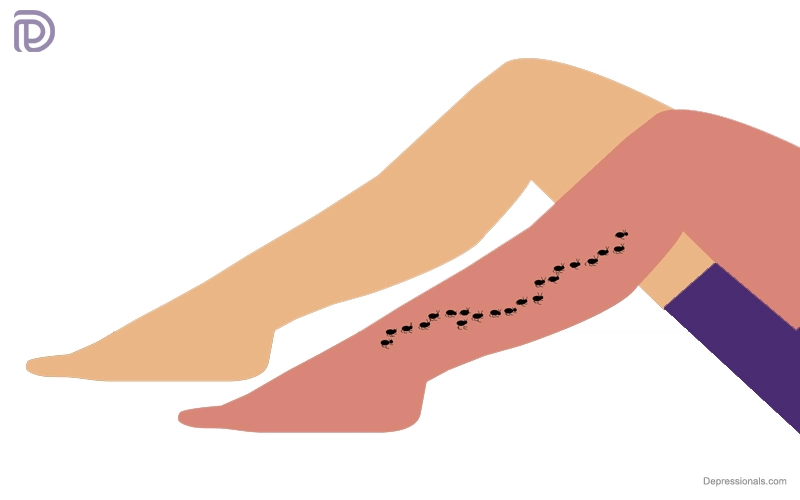
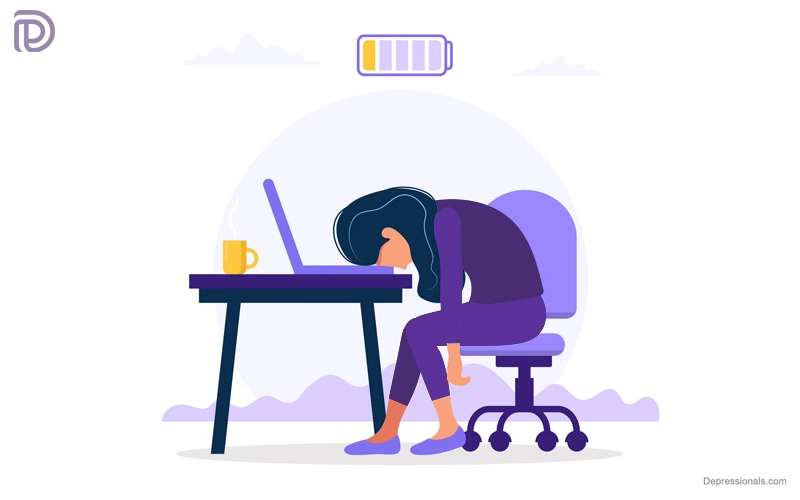
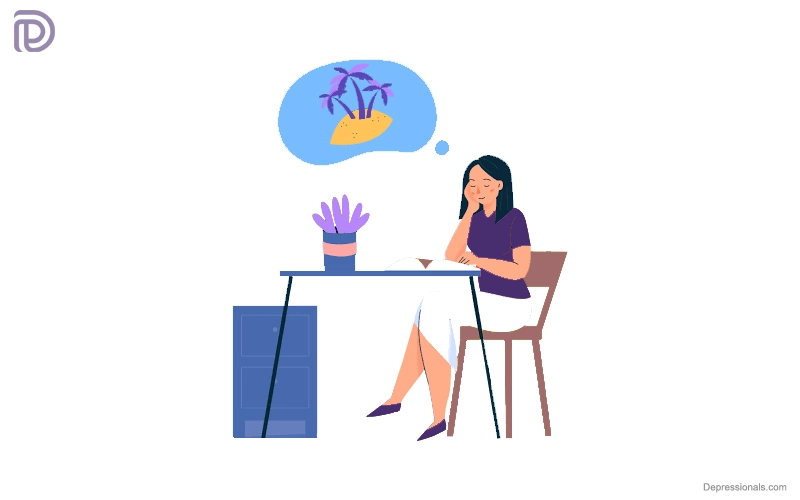
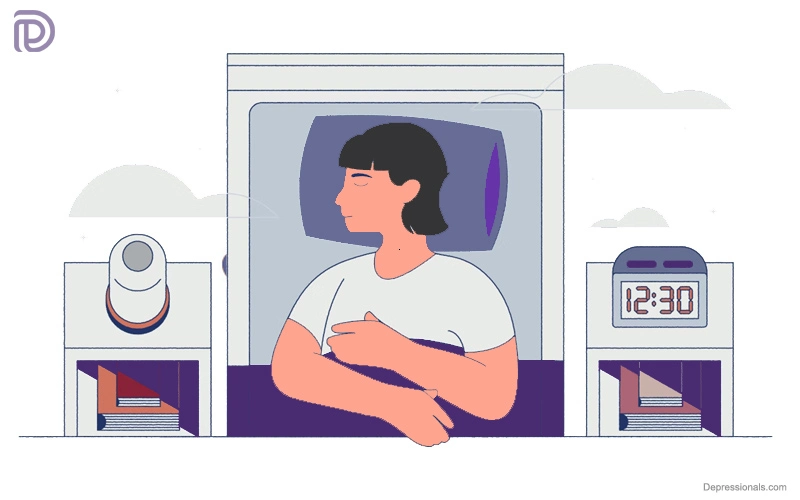
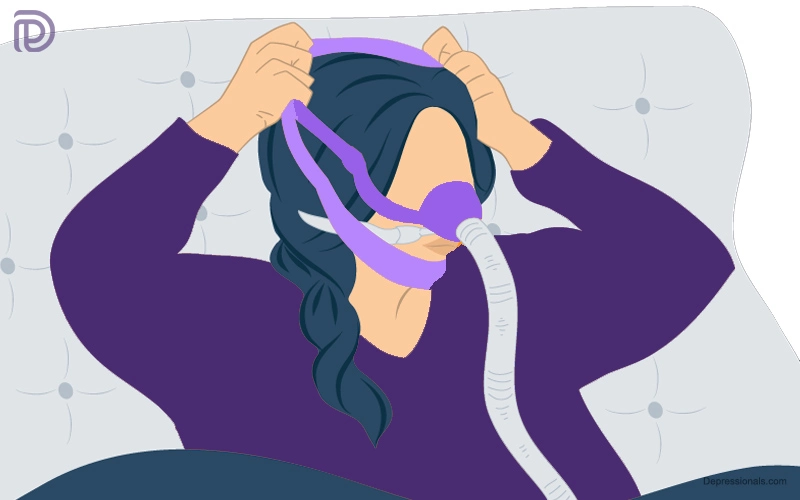

Hey there are using WordPress for your site platform? I’m new to the blog world but I’m trying to get started and set up my own. Do you need any html coding knowledge to make your own blog? Any help would be greatly appreciated!
Its like you read my mind! You seem to know so much about this, like you wrote the book in it or something. I think that you can do with a few pics to drive the message home a little bit, but other than that, this is excellent blog. A fantastic read. I will certainly be back.